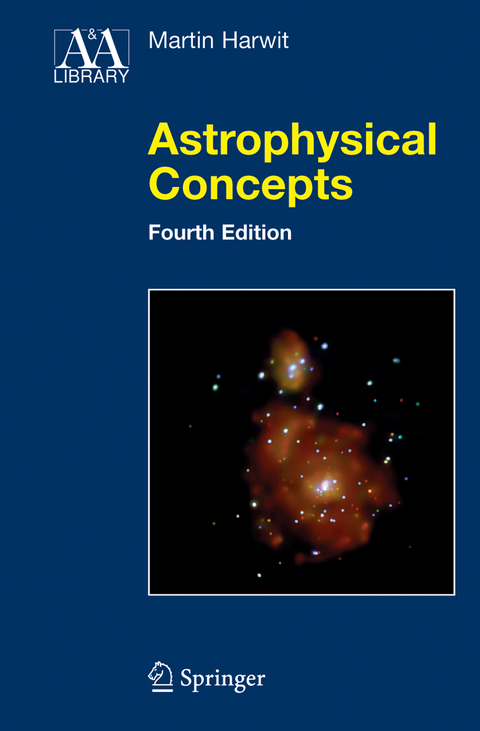
Astrophysical Concepts
Seiten
2006
|
4th ed. 2006
Springer-Verlag New York Inc.
978-0-387-32943-7 (ISBN)
Springer-Verlag New York Inc.
978-0-387-32943-7 (ISBN)
Thirty-threeyears have passed since the ?rst edition of Astrophysical Concepts - peared. Primordial ?uctuations, remnants from the ?rst moments in the expansion of the Universe have revealed themselves in the faint ripples marking the microwave sky.
Thirty-threeyears have passed since the ?rst edition of Astrophysical Concepts - peared. During this time astrophysics has undergone major revolutions. We have gained new perspectives on the Universe with the aid of powerful gamma-ray,- ray, and infrared telescopes, whose sensitivitiescould not have been imagined three decades earlier. We have become expert at snaring neutrinos to gain insight on - clear processes at work in the Sun and supernovae. We have direct evidence for the existence of neutron stars and gravitationalwaves, and persuasive arguments for the detection of black holes on scales of individual stars as well as galactic nuclei. Primordial ?uctuations, remnants from the ?rst moments in the expansion of the Universe have revealed themselves in the faint ripples marking the microwave sky. These ripples also document the ?rst appearance of dark matter now known to have dominatedthe formationand evolutionof all cosmic structure. And dark energy has gradually had to be acknowledged to be the dominant factor driving the expansion of the Universe today.
Thirty-threeyears have passed since the ?rst edition of Astrophysical Concepts - peared. During this time astrophysics has undergone major revolutions. We have gained new perspectives on the Universe with the aid of powerful gamma-ray,- ray, and infrared telescopes, whose sensitivitiescould not have been imagined three decades earlier. We have become expert at snaring neutrinos to gain insight on - clear processes at work in the Sun and supernovae. We have direct evidence for the existence of neutron stars and gravitationalwaves, and persuasive arguments for the detection of black holes on scales of individual stars as well as galactic nuclei. Primordial ?uctuations, remnants from the ?rst moments in the expansion of the Universe have revealed themselves in the faint ripples marking the microwave sky. These ripples also document the ?rst appearance of dark matter now known to have dominatedthe formationand evolutionof all cosmic structure. And dark energy has gradually had to be acknowledged to be the dominant factor driving the expansion of the Universe today.
An Approach to Astrophysics.- The Cosmic Distance Scale.- Dynamics and Masses of Astronomical Bodies.- Random Processes.- Photons and Fast Particles.- Electromagnetic Processes in Space.- Quantum Processes in Astrophysics.- Stars.- Cosmic Gas and Dust.- Formation of Stars and Planetary Systems.- The Universe We Inhabit.- An Astrophysical History of the Universe.- The Formation of Cosmic Structures.- Life in the Universe.
| Erscheint lt. Verlag | 6.9.2006 |
|---|---|
| Reihe/Serie | Astronomy and Astrophysics Library |
| Zusatzinfo | XVI, 716 p. |
| Verlagsort | New York, NY |
| Sprache | englisch |
| Maße | 156 x 235 mm |
| Themenwelt | Naturwissenschaften ► Physik / Astronomie ► Astronomie / Astrophysik |
| ISBN-10 | 0-387-32943-9 / 0387329439 |
| ISBN-13 | 978-0-387-32943-7 / 9780387329437 |
| Zustand | Neuware |
| Haben Sie eine Frage zum Produkt? |
Mehr entdecken
aus dem Bereich
aus dem Bereich
Grundlagen, Anwendungen in Astrophysik und Kosmologie sowie …
Buch | Softcover (2022)
Springer Spektrum (Verlag)
49,99 €
die Geschichte und Erforschung unserer Galaxie
Buch | Hardcover (2023)
C.Bertelsmann (Verlag)
30,00 €
Von Hubble-, James-Webb- und anderen Großteleskopen bis zu …
Buch | Softcover (2024)
Springer (Verlag)
22,99 €


